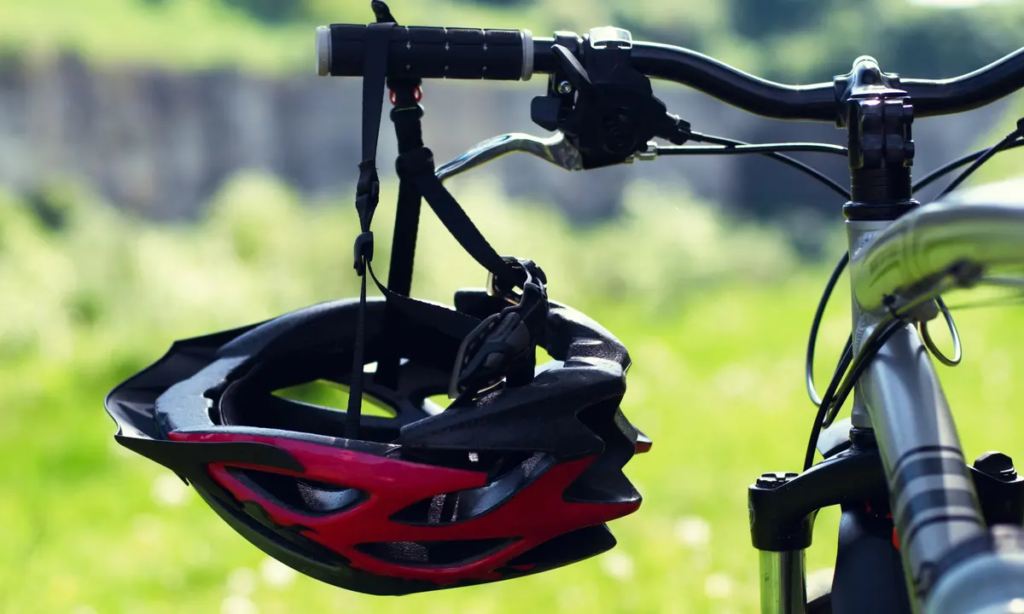Stay Safe on Your Bike

Riding a bike is one of the most exhilarating experiences one can have. The feeling of wind rushing through your hair, the thrill of speed, and the freedom of movement are all part of the allure of biking.
However, it’s important to remember that biking is also a potentially dangerous activity, and taking safety precautions is vital to ensure a safe and enjoyable experience. One of the most important safety measures that you can take while riding a bike is wearing a helmet.
A helmet is a protective gear worn on the head to prevent injuries to the skull and brain. Helmets come in various shapes, sizes, and materials, but their primary purpose is to absorb the impact of a collision and prevent head injuries. Here are some reasons why wearing a helmet is crucial while riding a bike.
Advantages of wearing helmets
1. Protection from head injuries
Head injuries are among the most severe and potentially fatal injuries in a bike accident. Helmets act as a cushion between the skull and any object that may hit it during an accident. The helmet’s outer shell absorbs the impact, while the inner layer of foam helps disperse the force of the impact, reducing the severity of the injury.
2. Reduces the risk of brain damage
Head injuries can lead to brain damage, which can result in permanent disability or even death—wearing a helmet while biking can significantly reduce the risk of brain damage in the event of an accident.
3. Increases visibility
Helmets often come with reflective material or bright colors that increase visibility, making it easier for drivers to see bikers on the road. This increased visibility can reduce the risk of accidents caused by motorists failing to see bikers.

4. Enhances confidence
Wearing a helmet can boost your confidence and give you peace of mind, knowing that you are taking steps to protect yourself while riding. This can make you a more focused and safer rider, reducing the risk of accidents.
5. It’s the law
In many jurisdictions, wearing a helmet while riding a bike is a legal requirement. Failure to comply with helmet laws can result in fines, points on your driving record, and even imprisonment in some cases.
While wearing a helmet is essential for all bikers, it is especially crucial for children. Children are more susceptible to head injuries because their skulls are still developing, and their brains are more vulnerable to damage. A helmet can provide vital protection for children while they are riding their bikes, reducing the severity of any head injuries they may sustain.
It’s also essential to choose the right helmet for your head size and shape. A helmet that is too small or too big will not provide adequate protection in an accident. The helmet should fit snugly on your head, without being too tight or loose. It’s also important to ensure that the helmet is properly fastened, with the chin strap securely in place.
While a helmet is a crucial piece of safety equipment, it is not the only measure you can take to stay safe while riding a bike. It’s important to obey traffic laws, ride defensively, and remain aware of your surroundings. It’s also a good idea to wear other protective gear, such as knee and elbow pads, especially if you are engaging in more challenging or high-risk biking activities.
Safety for Mountains Biking

When it involves cycling withinside the mountains, protection must be your pinnacle priority. Riding in mountainous terrain presents unique challenges and hazards that require special attention and preparation, and wearing a helmet is one of the most critical safety measures you can take. Here are some factors to consider when choosing and using a helmet for mountain biking.
Impact protection: Mountain biking often involves rough terrain and high speeds, increasing the risk of accidents and falls. A helmet designed for mountain biking should have a hard outer shell and a thick, shock-absorbing liner to protect your head from impact.
Ventilation: Mountain biking can be physically demanding, and you’ll likely work up a sweat while riding. A well-ventilated helmet will help keep your head cool and comfortable, reducing the risk of heat stroke and other heat-related illnesses.
Visor: A helmet with a visor can provide valuable shade and protect your eyes from the sun and flying debris while riding.
Fit: A helmet that fits properly is essential for maximum protection. Look for a helmet that snugly fits your head without being too tight or loose. You should be able to adjust the fit using the chin strap and other adjusters to ensure a secure fit.
Durability: Mountain biking can be tough on your gear, and your helmet is no exception. Look for a helmet made from durable materials that can withstand the wear and tear of mountain biking.
It’s also important to regularly inspect your helmet for signs of wear and tear and to replace it if it has been involved in a significant impact or if it shows any signs of damage.

Conclusion – Final Words
In conclusion, wearing a helmet is a simple yet effective way to reduce the risk of injury while riding a bike. It protects your head and brain, enhances your visibility, and boosts your confidence as a rider. Whether you are a seasoned cyclist or a casual rider, make sure to wear a helmet every time you hit the road.
Your safety and well-being depend on it. Always inspect your helmet regularly and replace it if necessary. With the right helmet and proper safety measures, you can enjoy the thrill of mountain biking while staying safe and protected.
Latest Posts

Hello, I’m Chaudhry Badar. I am a multi-talented professional passionate about all things digital. With a diverse skill set encompassing web design, blogging, content writing, professional writing, copywriting, SEO expertise, and a range of web services, I am dedicated to delivering exceptional online experiences. My blogging and content writing proficiency allows me to create engaging and informative content that resonates with diverse audiences. I can transform complex ideas into accessible and compelling narratives, providing value and insight. I adeptly craft compelling and tailored content that captivates audiences, whether for brand messaging, marketing campaigns, or online platforms, driving engagement and delivering impactful results.
